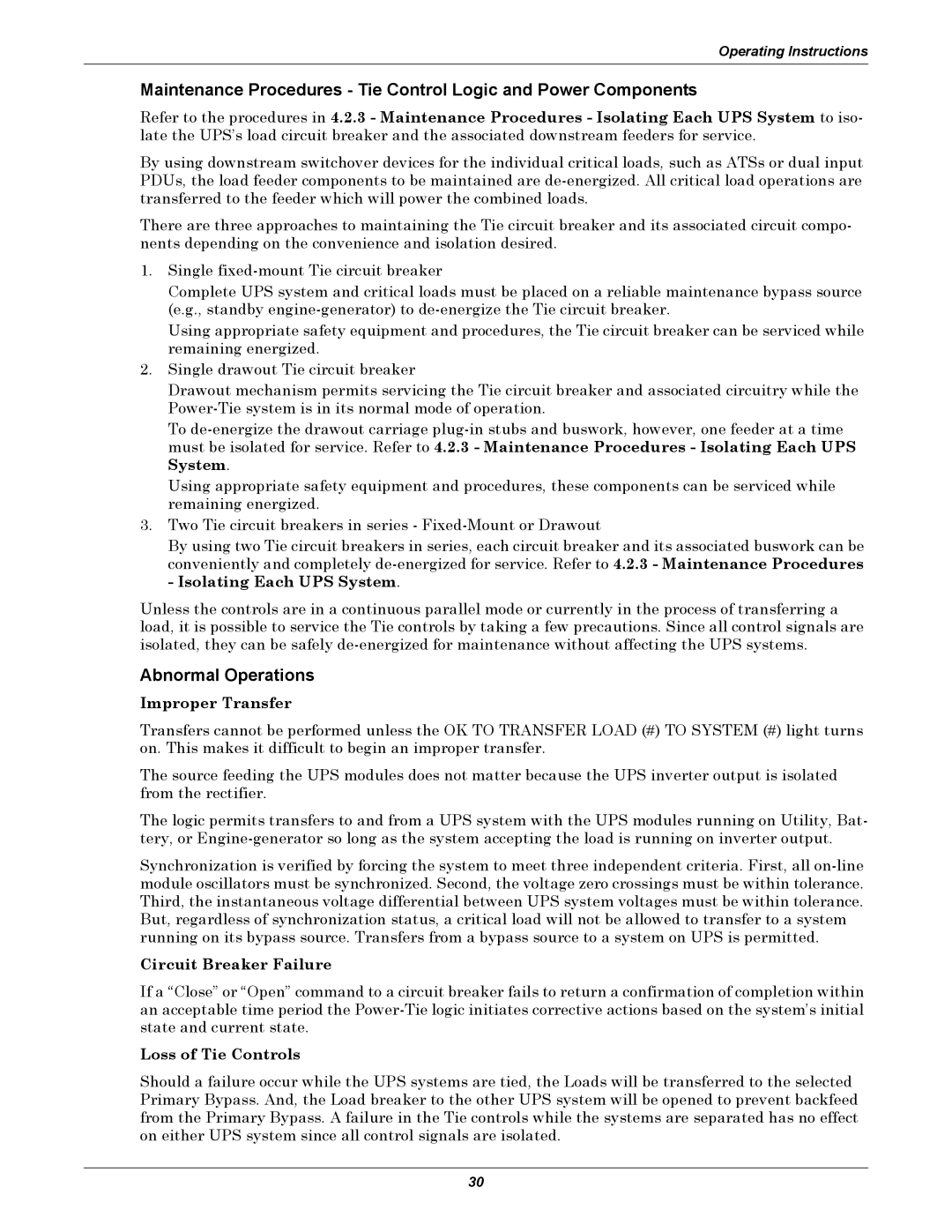
Operating Instructions
Maintenance Procedures - Tie Control Logic and Power Components
Refer to the procedures in 4.2.3 - Maintenance Procedures - Isolating Each UPS System to iso- late the UPS’s load circuit breaker and the associated downstream feeders for service.
By using downstream switchover devices for the individual critical loads, such as ATSs or dual input PDUs, the load feeder components to be maintained are
There are three approaches to maintaining the Tie circuit breaker and its associated circuit compo- nents depending on the convenience and isolation desired.
1.Single
Complete UPS system and critical loads must be placed on a reliable maintenance bypass source (e.g., standby
Using appropriate safety equipment and procedures, the Tie circuit breaker can be serviced while remaining energized.
2.Single drawout Tie circuit breaker
Drawout mechanism permits servicing the Tie circuit breaker and associated circuitry while the
To
Using appropriate safety equipment and procedures, these components can be serviced while remaining energized.
3.Two Tie circuit breakers in series -
By using two Tie circuit breakers in series, each circuit breaker and its associated buswork can be conveniently and completely
Unless the controls are in a continuous parallel mode or currently in the process of transferring a load, it is possible to service the Tie controls by taking a few precautions. Since all control signals are isolated, they can be safely
Abnormal Operations
Improper Transfer
Transfers cannot be performed unless the OK TO TRANSFER LOAD (#) TO SYSTEM (#) light turns on. This makes it difficult to begin an improper transfer.
The source feeding the UPS modules does not matter because the UPS inverter output is isolated from the rectifier.
The logic permits transfers to and from a UPS system with the UPS modules running on Utility, Bat- tery, or
Synchronization is verified by forcing the system to meet three independent criteria. First, all
Circuit Breaker Failure
If a “Close” or “Open” command to a circuit breaker fails to return a confirmation of completion within an acceptable time period the
Loss of Tie Controls
Should a failure occur while the UPS systems are tied, the Loads will be transferred to the selected Primary Bypass. And, the Load breaker to the other UPS system will be opened to prevent backfeed from the Primary Bypass. A failure in the Tie controls while the systems are separated has no effect on either UPS system since all control signals are isolated.
30
